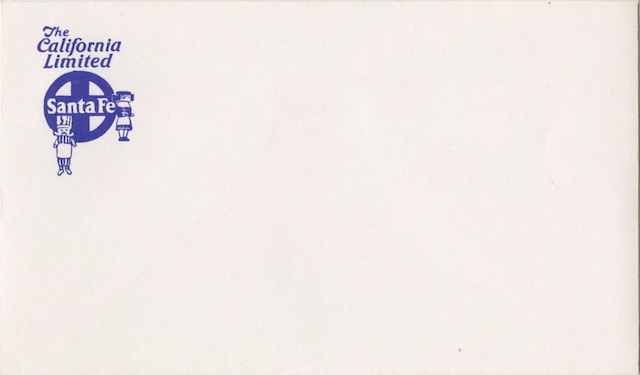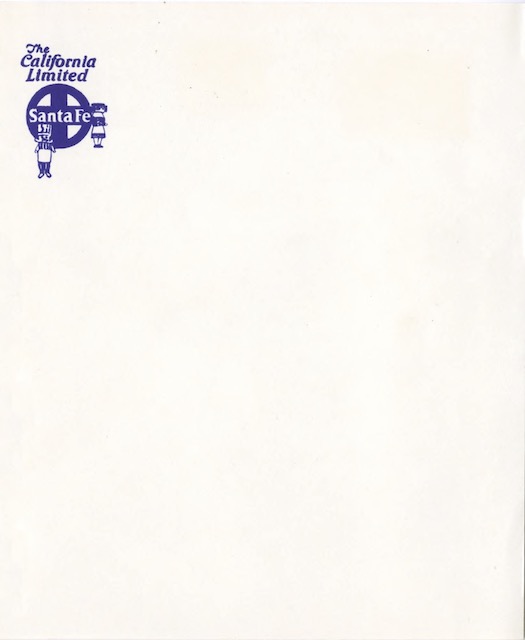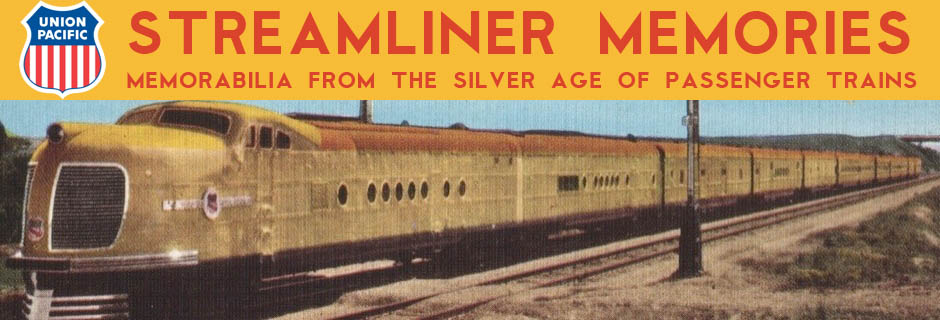We’ve previously seen a piece of on-board stationery for the California Limited. Today I also have an envelope for the same train.

Click image to download a 34-KB PDF of this letterhead
None of the three limited trains that originally competed in the Chicago-Los Angeles market ended with dignity. The California Limited was bumped from its place as Santa Fe’s premiere train with the introduction of the Chief in 1926. It then became Santa Fe’s third-ranked train with the introduction of the Super Chief in 1937 — and arguably the fourth-ranked train with the introduction of the faster, albeit all-coach, El Capitan in 1938.
 Click image to download a 40-KB PDF of this letterhead
Click image to download a 40-KB PDF of this letterhead
The Los Angeles Limited was similarly bumped by the City of Los Angeles in 1936. While other trains were being streamlined, both the California Limited and Los Angeles Limited remained as heavyweights until 1954, when they disappeared from the timetables. The Santa Fe train survived a little longer than the UP train as the latter’s last run was in January 1954 while the former’s was in June.
Unlike the other two limiteds, the Golden State Limited was streamlined in 1948, but that was only because the railroads that operated it were unable to come up with a new train that was competitive with the Super Chief and City of Los Angeles. As I’ve noted before, after the war Southern Pacific and Rock Island had planned to start a new train called the Golden Rocket that would have met the sub-40-hour timetables of its competitors.
After one set of equipment for the train had been delivered, however, Southern Pacific backed out, probably because the Interstate Commerce Commission proposed a rule limiting trains to 79 miles per hour unless the railroad installed advanced (and expensive) signaling systems. When that rule went into effect on January 1, 1952, it would have forced the Golden Rocket to become a golden slug, so SP decided it wasn’t worth starting the train in the first place.
Instead, the Golden State Limited became the streamlined Golden State, with the word “limited” dropped as if in concession that the train couldn’t keep up. (Note that neither the Super Chief nor the City of Los Angeles used the word “limited” in their names either.) While the Super Chief and City of Los Angeles both survived to Amtrak, the Golden State made its last departure on February 19, 1968.

Interestingly enough, the Golden State didn’t come off because SP necessarily wanted to be rid of it, although they did. Rock Island was the weakest of the granger roads, and was bleeding cash at an alarming rate. The ICC in their ruling granting permission for the Golden State’s discontinuance noted that RI was in no condition to keep the train going, the proverbial “one foot in the grave and the other on a banana peel.” As well, RI’s rolling stock was in such bad condition from deferred maintenance that they were running up a car equalization deficit that undoubtedly was never settled.